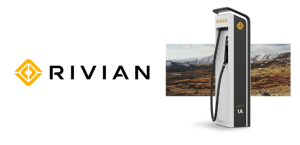Toronto, Ontario — In this week’s EV/AV report, gaming graphics in the Volvos of the future, Buick promises to cease combustion vehicle production by 2030 and B.C. continues to lead the charge in Canadian EV adoption.
Driver’s Display
Volvo’s drive towards automated assistance means even more sensors for all sorts of information—battery life on electric cars, passerbys and cyclists detected by LiDAR systems. All this data needs to be clearly understood by the driver.
As Volvo puts it, “one overly-complex diagram could be enough to distract a driver on the road, and potentially even lead to more accidents.”. This is where Unreal comes in with the engine powering video games like Batman Arkham Asylum, plenty of data has to be communicated, and quickly as well – something Unreal has plenty of expertise with.
“We know that the quality of the visuals will not only create the kind of experience we aim for, but also make it responsive and fast,” said Thomas Stovicek, head of user experience at Volvo.
Emerging Electric
Buick, a subdivision of General Motors has made a commitment—no more combustion vehicles before the decade is out.
In response to growing fuel prices and sustainability issues in the auto industry, Buick is set to fully electrify its North American lineup, along with a new makeover: sleeker and more dynamic, said Sharon Gaucci, executive director of Global Buick.
Buick’s first electric vehicle, the Wildcat EV will make its debut in the United States by 2024. Besides this new vehicle, the company also plans to revive the Electra name as the new name for future EVs.
“Buick’s new logo, use of the Electra naming series and a new design look for our future products will transform the brand,” said Duncan Aldred, global vice president for Buick and GM.
ZEV growth report
With the end of Q1 2022, ZEVs now account for one in twelve new vehicle registrations in Canada, according to a new report by S&P Global Mobility.
British Columbians represent 26 percent of all registered zero-emission vehicles in Canada, and 17.1 percent of the country’s market share. While Quebec comes in second with a 13.6 percent market share, they account for just over a third of all ZEV registrations in Canada.
While Ontario’s 5.7 percent share is one of the lowest due in part to the lack of a ZEV incentive program, the volume of ZEVs did increase by 112 percent, leading to Ontario accounting for 28 percent of Canadian ZEV registrations.



























